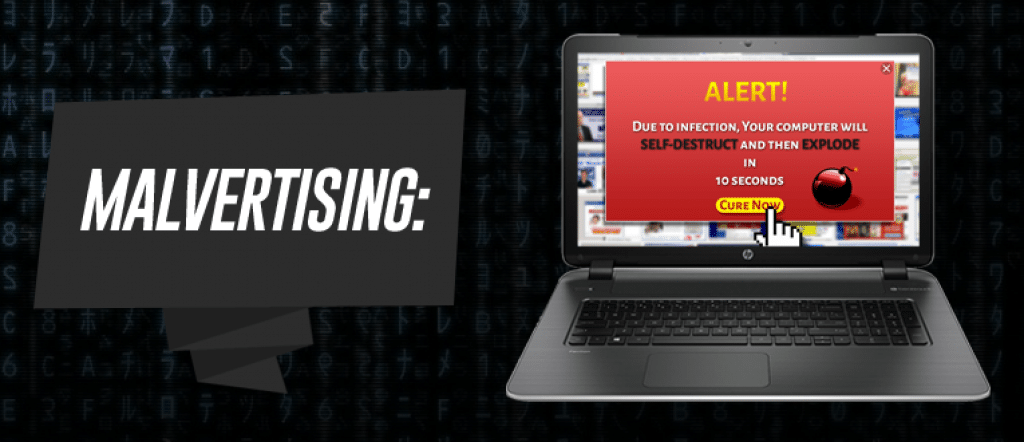What is Malvertising?
The use of online advertisements to help spread dangerous malware is known as “malvertising,” a word derived from “malicious advertising.”
How malvertising works
Malvertising is growing in popularity.
It involves putting dangerous codes into online advertisements, which could infect your computer even on trusted websites.
Unfortunately, there’s a good chance you won’t even know you’ve been attacked.
Hackers often rely on your sense of trust with popular websites to carry out their attacks.
Hackers are able to hide their activity while they gain access to a victim’s web browsers and computers.
Infected advertisements are quite often legitimate ads.
By injecting dangerous code into these advertisements on otherwise-trusted websites, cybercriminals are often able to target victims who might not otherwise be susceptible to an attack.
These targets are often immune from attacks because they use anti-virus programs, firewalls and other security programs.
Malvertising can work in two ways.
Either a victim must click on the ad to initiate the installation of malicious code, or in some instances, the victim doesn’t have to click on anything.
Some “pre-click” malvertising can be automatically initiated simply by visiting a website with an infected ad.
The ad might take a user to a different website, which is also dangerous.
This is possible because of small pieces of code that can be disguised in the advertisement.
It’s a growing trend in computer threats, and criminals can now use malvertising to decide how they want to take advantage of you and your computer.
They might decide to use your connection to infect other computers and target other victims, or they may simply aim to steal your private information.
Safe Internet habits to avoid dangers
Avoiding malvertising isn’t very easy; in fact, if you use the Internet, it’s nearly impossible.
Avoid sketchy websites; while malvertising often targets trusted sites, the less-trusted are also used to hide malicious code within advertisements.
Keep your anti-virus program running and updated so it can detect the threats that might be installed on your computer after a malvertising attack.
Keep a firewall active and use only the latest web browsers for the Internet.
If you don’t use or need Adobe Flash or Java, disable it or uninstall it.
If possible, set them to “click-to-play,” so you get a message that lets you know when a website wants to load a plug-in.
Click-to-play allows you to decide whether to run the plug-in.
Also consider using an ad blocker software, which can stop certain malicious scripts from loading.[/vc_column_text][/vc_column][/vc_row]

